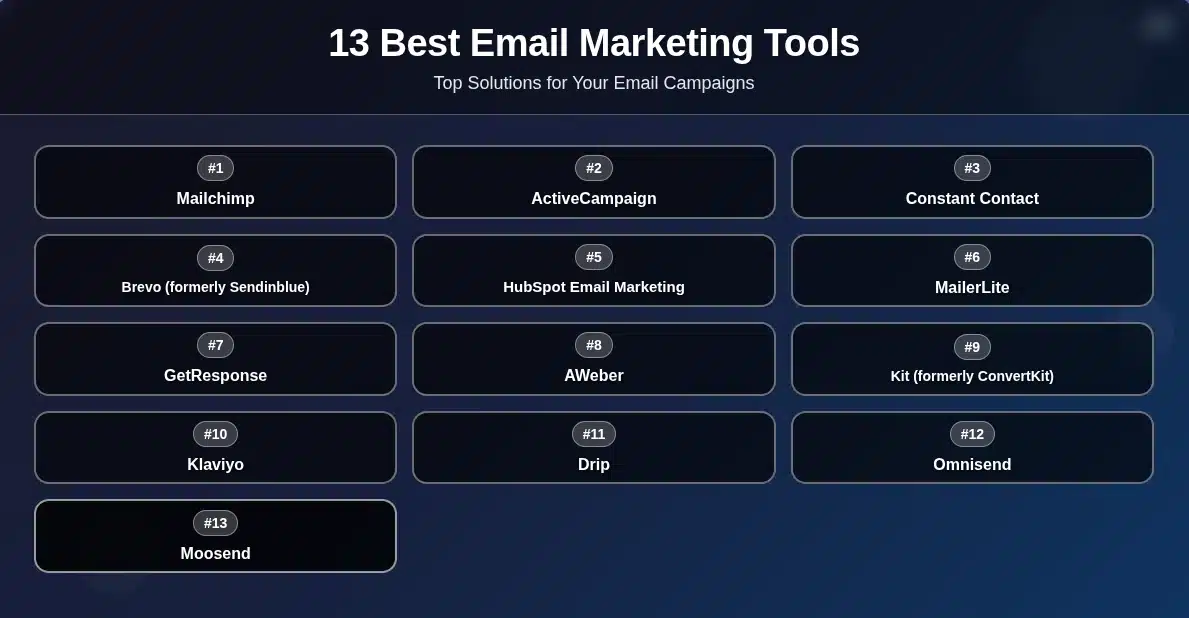- 1. Determine Your Target Audience
- 2. Analyze the Market
- 3. Decide Which Platforms You Will Use
- 4. Put Together a Content Guide
- 5. Find Tools to Help You
- 6. Create a Posting Schedule
- 7. Start Publishing Content
- 8. Interact with Your Audience
- 9. Cross-Promote on Other Channels
- 10. Analyze Your Mistakes
- Final Thoughts
Social media marketing is one of the most important types of digital marketing. It allows companies to get more exposure online and helps them build dedicated fan bases or communities of customers. At the same time, it can help business owners direct more traffic to their websites.
However, just like with any other kind of marketing, social media marketing requires research, time, and effort as well as the resources to implement it. Here is how a company can be successful with social media marketing.
Checkout our free social media management course online
1. Determine Your Target Audience
First and foremost, you need to determine your target audience. This is one of the most fundamental steps you should complete. It will help you establish the foundation for your entire strategy. If you don’t know your audience, you don’t know your customers, and you can’t market your products to them correctly. Consequently, understanding your social media audience is crucial for the success of your social media strategy.
To determine your target audience, you need to do market research. Find out which segments of your current customers use social media and which platforms they use the most (e.g, customers of both genders aged 20 to 35 who use Facebook and Twitter). Once you know how many of your current customers use social media, you need to determine how many of your potential customers use social media (an extra target audience segment for you).
2. Analyze the Market
The second thing you should do is analyze the market. This is different from researching your audience because the market analysis is meant to give you a better idea of how much demand there is for your products, and what your competitors are already doing on social media. If there is not enough demand or enough demand and enough supply, you will find it difficult to try to sell your products to your target market.
At the same time, it is worth finding out what your competitors are doing on social media and what kind of tactics they have adopted. For example, you may see extensive influencer marketing from one brand while another one will have many ads appearing on certain social media platforms. Whatever these techniques are, you might want to consider using them if they have proven to be effective.
3. Decide Which Platforms You Will Use
It’s not a very good idea to create accounts on all social media platforms in existence because you simply won’t be able to manage them all, so do your research and choose the most relevant ones.
When deciding which platforms you will be using, keep in mind that you should only choose a maximum of four. One is great for small businesses with a small target audience. Two gives you more leverage. Three is ideal for middle-sized and big business or larger target audiences, but four is the maximum you should consider. Five or more social media accounts are only great for large enterprises because it is much harder to manage them all at once.
4. Put Together a Content Guide
Now that you know all the basics, it is time to move to more complicated aspects of your social media marketing strategy. You need to put together a content guide that will document the quality requirements for your content as well as other characteristics you want to see in your content. These will help you maintain consistency and develop a unique brand voice and style that will make you stand out from the crowd.
Consider things such as whether or not all the visuals will be completely original, what format your posts will have on every separate platform, the number of links you will be using in your posts, and so on. Make sure to clearly define the "voice" your brand content should have. Is it friendly and playful, or is it professional and authoritative? These may seem trivial, but they make your content different from any other brand’s.
5. Find Tools to Help You
One of the most obvious things about successful social media marketing is that professional marketers use tools to help them manage social media accounts. These tools allow you to automate part of the tasks you are already performing regularly by yourself. They also allow you to spend more time on perfecting your current strategy instead of spending too much time creating content, choosing hashtags, and posting content on a schedule.
The first app you need is a calendar. Even better if you can find a scheduling app that publishes your content automatically. Another tool you need is a grammar and spelling checker to proofread and edit your text. And of course, you need apps or programs to create and edit your visuals. Keep in mind that there are different types of visuals you will want to use including photography, illustrations, infographics, graphs, GIFs, animations, and videos.
6. Create a Posting Schedule
Speaking of calendars and scheduling apps, you need to create a posting schedule that will help you maintain consistency and regularity. Though you already have a content guide that helps you keep your content quality uniform, a posting schedule is meant to help you maintain a certain pace of posting (e.g. posting once a day or once every two days is more effective than posting once a week or once a month).
At the same time, posting during certain hours every day is better than posting whenever you feel like it. If your audience is mostly made up of adults, they will be using social media in the morning and the evening. Teenagers, however, often use social media during the day as well. If you don’t think that you can maintain a steady flow of new content, consider hiring more writers from a writing services review site like Online Writers Rating who will help you manage such workload better.
7. Start Publishing Content
Once you are all set and ready, you can start publishing content. As mentioned earlier, you need to post it regularly and during certain periods to attract more attention to it. Just make sure that you don’t publish too many posts at once because some platforms may view it as spamming and will deactivate some of your account features for some time.
Once your post is up, monitor its performance and measure all the necessary metrics such as likes, comments, replies, shares, retweets, and so on. If someone claims that you have used their creation without informing them or asking permission, be quick to resolve the issue by taking down the post or arranging a solution the owner will accept. Likewise, take down posts that have been accused of insensitivity, such as racist or homophobic posts.
Also Read: 3 Reasons Why You Should Focus On Plagiarism Free Content in Content Marketing
8. Interact with Your Audience
An important part of growing your social media community includes interacting with your audience as much as you can. Replying to comments, curating user-generated content, participating in conversations both in private messages, and under other posts – all of these will help you build better relationships with your followers.
To encourage consumers to purchase your products, you need to establish an emotional connection with them. But doing this is fairly hard for businesses which is why it is so important to have a brand voice that defines your brand's personality. And of course, this personality should stand out both in your content and in your interactions with other social media users.
Also, if you want to learn the basics of Instagram Marketing then enroll in this Instagram Marketing Course
9. Cross-Promote on Other Channels
Cross-promotion is not a new technique, yet, not everyone uses it. In any case, it’s a pretty useful tactic that you can implement into your digital marketing strategy to maximize the results of your marketing and advertising efforts.
Cross-promotion involves advertising your social media profiles on other marketing channels you use while also promoting these channels on your social media profiles. For example, you can promote your email newsletter on your social media while adding social media links to your website.
Also Read: 5 Reasons you should focus on Instagram Marketing
10. Analyze Your Mistakes
Last but not the least, you need to analyze your mistakes to improve your content and adopt more efficient social media marketing techniques. To analyze your mistakes, carefully monitor how well your content performs, and try to find similar patterns in the posts that get the most likes, comments, and shares.
For example, you might notice that posts with questions directed at your audience generate more comments because people want to share their opinions. Infographics, graphs, and illustrations get more shares while insightful statistics can be quoted by others.
Final Thoughts
All in all, social media marketing shouldn’t intimidate you. Just like any type of marketing, it needs planning, but once you have a good strategy ready, you will be more prepared to launch successful social media marketing campaigns. Follow the tips in this article and start using social media platforms to your benefit.
Contributed by: Gregory V Chapman
Gregory is passionate about researching new technologies in both mobile, web and WordPress. Also, he works on Best Writers Online, the best writing services reviews. Gregory loves stories and facts and always tries to get the best of both worlds.
If you found this helpful and wish to learn more such concepts, Check out Digital Marketing Postgraduate course today!




